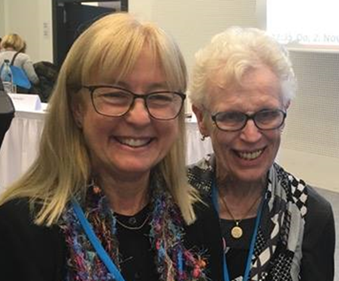Search
Research
Modelling quality of life in children with intellectual disability using regression treesTo identify factors associated with quality of life (QoL) in children with intellectual disability. We aimed to identify patterns of association not observable in previous hypothesis-driven regression modelling using the same data set from a cross-sectional observational study.
Research
Association between disability status and dental attendance patterns in Australian children: A national surveyThis study investigated the dental attendance patterns of Australian children with and without disabilities using data from Growing up in Australia: The Longitudinal Study of Australian Children.

News & Events
The Kids researchers who helped identify rare disorder now poised to help the hunt for treatmentTwo The Kids Research Institute Australia researchers recognised for their role in building a global database for CDKL5 deficiency disorder are now helping to set the scene for clinical trials of much-needed potential treatments.
Research
Congenital anomalies in children with postneonatally acquired cerebral palsy: an international data linkage studyTo describe the major congenital anomalies present in children with postneonatally acquired cerebral palsy (CP), and to compare clinical outcomes and cause of postneonatally acquired CP between children with and without anomalies.
Research
Trends in prenatal diagnosis of congenital anomalies in Western Australia between 1980 and 2020: A population-based studyAdvances in screening and diagnostics have changed the way in which we identify and diagnose congenital anomalies.
Research
The 8th International RASopathies Symposium: Expanding research and care practice through global collaboration and advocacyGermline pathogenic variants in the RAS/mitogen-activated protein kinase (MAPK) signaling pathway are the molecular cause of RASopathies, a group of clinically overlapping genetic syndromes. RASopathies constitute a wide clinical spectrum characterized by distinct facial features, short stature, predisposition to cancer, and variable anomalies in nearly all the major body systems.
Research
“Broken fragments or a breathtaking mosaic”: A mixed methods study of self-reported attributes and aspirations of siblings of individuals with and without neurodevelopmental conditionsSiblings of individuals with neurodevelopmental conditions (NDCs) experience distinct challenges and have unique strengths compared to siblings of individuals without NDCs.
Research
Intellectual disability and autism prevalence in Western Australia: impact of the NDISEstimates of the prevalence of intellectual disability or autism spectrum disorder may vary depending on the methodology, geographical location, and sources of ascertainment. The National Disability Insurance Scheme in Australia was introduced progressively from 2016 to provide individualized funding for eligible people with a significant and permanent disability.
Research
Continuous electroencephalography in the intensive care unit: A critical review and position statement from an Australian and New Zealand perspectiveThis article aims to critically review the literature on continuous electroencephalography (cEEG) monitoring in the intensive care unit (ICU) from an Australian and New Zealand perspective and provide recommendations for clinicians. Design and review methods: A taskforce of adult and paediatric neurologists, selected by the Epilepsy Society of Australia, reviewed the literature on cEEG for seizure detection in critically ill neonates, children, and adults in the ICU.
Research
From guidelines to practice: A retrospective clinical cohort study investigating implementation of the early detection guidelines for cerebral palsy in a state-wide early intervention serviceTo report on knowledge translation strategies and outcomes from the implementation of the early detection guidelines for cerebral palsy (CP) in a state-wide tertiary early intervention (EI) service and investigate the impact of social determinants on clinical services.
